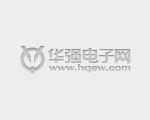description: In the LNK616-5W input power circuit design, diodes D1 through D4 rectify the AC input. Capacitors C1 and C2 filter the rectified AC. Inductors L1 and L2 and capacitors C1 and C2 form a π-type filter that attenuates differential mode conducted EMI noise. These combined with Power Integrations' transformer E-sheild technology allow the design to easily meet EN55022 Class B conducted EMI requirements with sufficient headroom without the need for a Y capacitor. The fire-resistant, fusible, wire-wound resistor RF1 provides severe fault protection and limits the inrush current generated during startup. The figure shows that U1 is powered by an optional bias supply, which reduces no-load consumption and improves efficiency at light loads. Capacitor C4 provides decoupling for U1, the value of which determines the amount of cable drop compensation. When the shape reaches 90 degrees, the peak value of the inrush current will reach I=220×1.414/1=311(A). Although this surge current is very short, if it is not suppressed, it will shorten the life of the input capacitor and rectifier bridge, and may also cause the input power supply voltage to decrease, so that other power equipment using the same input power supply will be powered down instantaneously. The normal operation of the device causes interference. During the constant voltage phase, the output voltage is regulated by the on/off control and is maintained by skipping the switching cycle. The regulation can be maintained by adjusting the ratio of the enable and disable switching cycles. Switching losses can also be reduced based on output load conditions, allowing converter efficiency to be optimized over the entire load range. Under light load (turbulent charging) conditions, the primary side current limit point is also reduced to reduce the transformer flux density, which in turn reduces audible noise. As the load current increases, the current limit will also rise and the skip period will be less and less. Recreational Vehicle Battery,Bms Rechargeable Rv Battery,Camping Rechargeable Battery,Golf Cart Battery JIANGMEN RONDA LITHIUM BATTERY CO., LTD. , https://www.ronda-battery.com
When no switching cycles are skipped (maximum output power point is reached), the controller in LinkSwitch-II will switch to constant current mode. When the load current needs to be further increased, the output voltage will drop. The drop in output voltage is reflected in the FB pin voltage.
In response to a voltage drop in the FB pin, the switching frequency will drop, resulting in a linear constant current output. D5, R3, R4, and C3 form an RCD-R clamp circuit that limits the drain voltage spike caused by leakage inductance. Resistor R4 has a relatively large value to avoid oscillation of the drain voltage waveform caused by leakage inductance, which improves regulation and reduces EMI generation. Diode D7 rectifies the secondary and C7 filters it. C6 and R8 together can limit transient voltage spikes on D7 and reduce conducted and radiated EMI. Resistor R9 acts as an output dummy load to ensure that the output voltage at no load is within acceptable limits. Feedback resistors R5 and R6 set the maximum operating frequency (and thus the output current) in the constant current phase and the output voltage during the constant voltage phase.
November 07, 2024